[Optimization] First Sight of Linear Optimization problem
Three main components in optimization problems
I Decision
I Objective
I Constraints
General form of optimization problem:
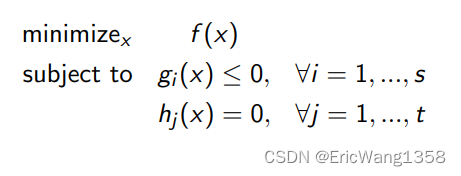
We have shown some examples of formulating a problem into optimization problem — maximum area problem, production planning problem, shortest path problem, vertex cover problem, support vector machine problem.
I Definition
A linear optimization problem, or a linear program (LP), is an optimization problem in which the objective function and all constraint functions are linear (in the decision variables).
A linear optimization problem can be generally written as

We can write LPs in a more compact way
Linear optimization belongs to continuous optimization
I Standard form
In order to study it more systematically, we want to have a standard (and even more compact) form of LP. An LP is said to be of standard form if it is of the form: In fact, any LP can be written in the standard form, using some “tricks”.
In fact, any LP can be written in the standard form, using some “tricks”.
If the objective was maximization
????????I Use ?c instead of c and change it to minimization
Eliminating inequality constraints?Ax ≤ b or Ax ≥ b
 notice that the equation about s is also linear, so we have a new slack variable?here.
notice that the equation about s is also linear, so we have a new slack variable?here.
If one has xi ≤ 0
????????I Define yi = ?xi
Eliminating “free” variables xi (no sign constraint on xi)
the decomposition of a variable xi? into two non-negative components
Standard form is mainly used for analysis purposes. We don’t need to write a problem in standard form unless necessary. Usually just write in a way that is easy to understand. However, being able to transform an LP into the standard form is an important skill. It is helpful for analyzing LP problems as well as using some software to solve it.
Some more examples
A hospital wants to make a weekly night shift schedule for its nurses
The demand for the night shift on day j is dj , for j = 1, ..., 7
Every nurse works 5 days in a row I We want to minimize the total number of nurses used while meeting all demand
Ignore the integrality constraints for now (i.e., we allow “half” nurse if necessary)
What is your choice of decision variable?
How about xi to be the number of nurses on day i?
Can’t capture the constraints that nurses have to work 5 days in a row
A better way is to define xi to be the number of nurses starting at day i
Our objective will be minimize x1 + x2 + x3 + x4 + x5 + x6 + x7
An air traffic controller needs to control the landing time of n aircrafts
I Flights must land in the order 1, ..., n
I Flight j must land in time interval [aj , bj ]
I The objective is to maximize the minimum separation time, which is the interval between two landings
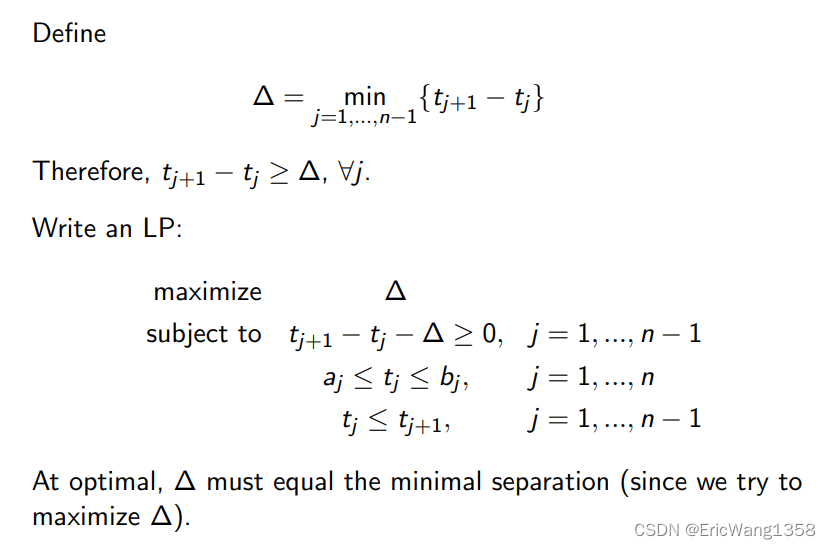
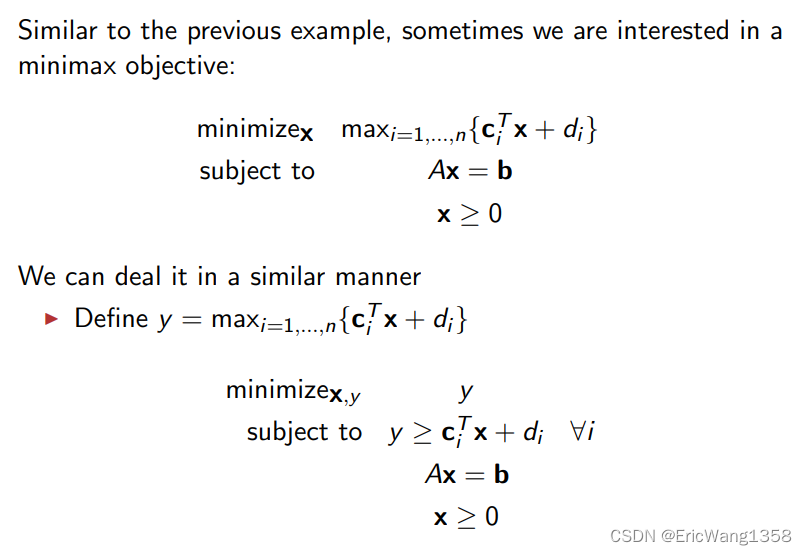
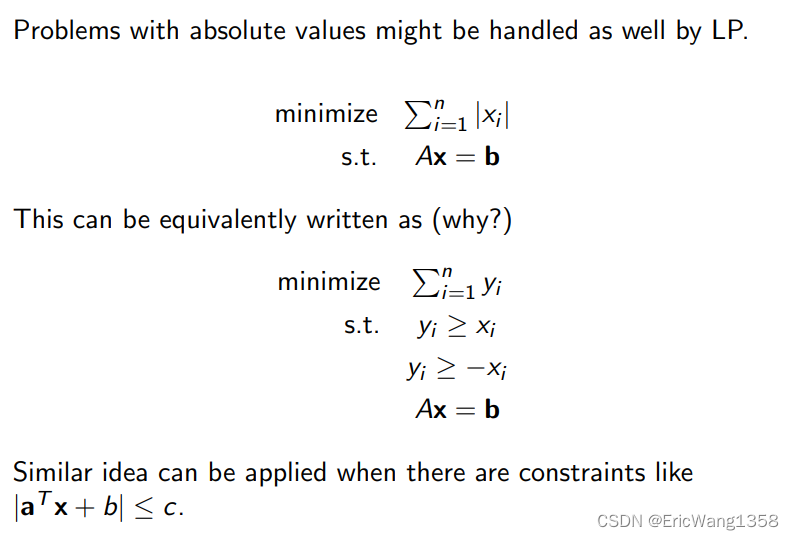
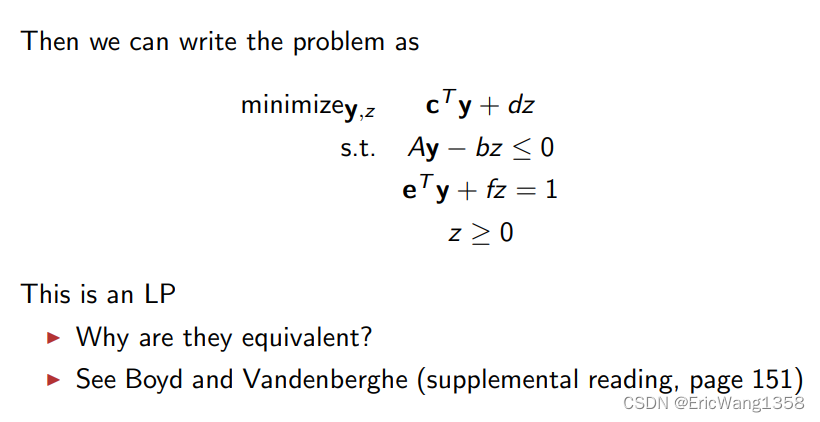 Why Linear Program?
Why Linear Program?
Easiest to solve.
I Theoretically, it is polynomial time solvable, and the complexity is low among all optimization problems.
I Practically, commercial softwares can solve LPs with tens of thousands of variables very easily. Can solve LPs with millions of variables if there are some structures
Extremely versatile
I Can model many real problems, either exactly or approximately Fundamental
I The LP theories lay the foundation for most optimization theories
本文来自互联网用户投稿,该文观点仅代表作者本人,不代表本站立场。本站仅提供信息存储空间服务,不拥有所有权,不承担相关法律责任。 如若内容造成侵权/违法违规/事实不符,请联系我的编程经验分享网邮箱:chenni525@qq.com进行投诉反馈,一经查实,立即删除!
- Python教程
- 深入理解 MySQL 中的 HAVING 关键字和聚合函数
- Qt之QChar编码(1)
- MyBatis入门基础篇
- 用Python脚本实现FFmpeg批量转换
- 14个工具,让 DevOps 和 SRE 遥遥领先!
- 【jmeter】接口测试流程
- MySQL的Explain详解(查询计划)
- 【UML】第4篇 UML公共机制(补扩展机制)
- x-cmd pkg | yq - 命令行 YAML处理工具
- ssm社区服务管理系统(程序+开题)
- “华为杯”研究生数学建模竞赛2016年-【华为杯】E题:粮食最低收购价政策问题研究
- 每日一道算法题 16(2023-12-29)
- 考研上岸的人越来越多,宿舍却不够分了!
- [Probability] 1.5 story proof and non-naive def